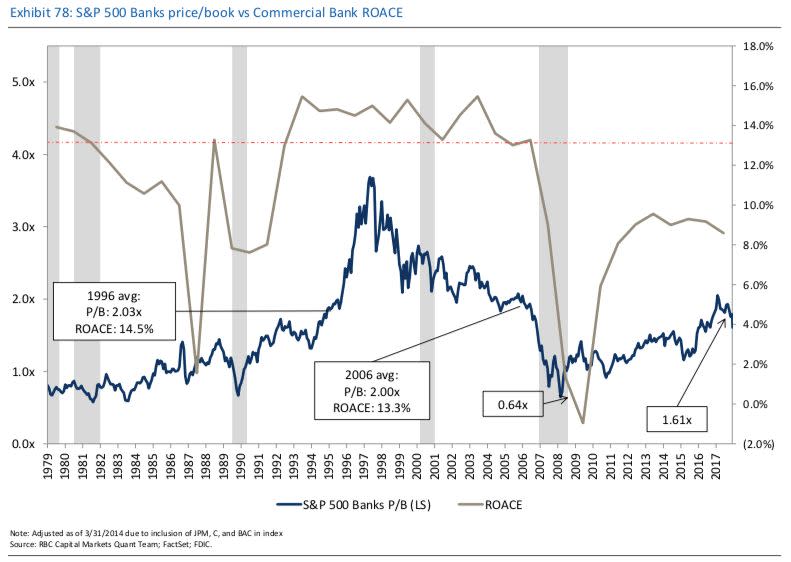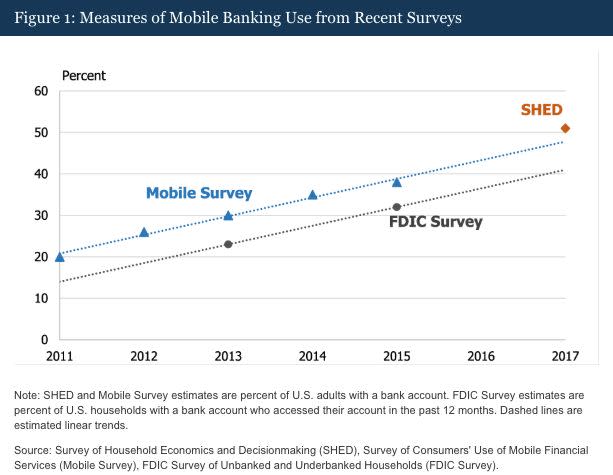Why 2019 could be the year of the big bank merger

One trend to pay attention to in 2019: consolidation in the banking industry. A lower corporate tax rate and a favorable regulatory environment are giving banks reason to think that next year might be the time to ink a big M&A deal.
Despite the fact that Democrats are set to take control of the House, the fruits of the Trump agenda on tax policy and deregulation are already in full force. Congress slashing corporate taxes from 35% to 21% has companies sitting on a generous stockpile of cash, and Trump-appointed officials at the bank regulators are hard at work on implementing a law rolling back portions of the Dodd-Frank financial regulatory framework. A notable change in the regulation: raising the threshold for extra scrutiny on banks, from $50 billion to $250 billion.
Prior to the regulatory change, banks near the $50 billion threshold were hesitant to make deals because growing in asset size would subject them to a slew of added regulatory requirements.
But with that line no longer there, the floodgates could open for larger banks to make big deals.
David Wright, managing director of Deloitte’s banking regulatory practice, told Yahoo Finance he has had conversations with banks between $50 billion and $200 billion on preparing for future mergers.
“We know that there are regional banks that are actively preparing to be able to execute if and when the numbers work for them,” Wright said.
Out of opportunity
RBC Capital Markets wrote December 12 that over the next 12 to 24 months, banks could be active in the M&A market with plenty of capital to spend. RBC said that in late 2019 or early 2020, it expects consolidation among the larger banks, a space eagerly hoping to reverse a post-crisis period of “anemic” M&A activity.
“We also believe banks today have excess capital and in some cases, management teams consider M&A an attractive alternative to share repurchases,” RBC wrote.
In addition to savings from the Tax Cuts and Jobs Act signed last year, banks could find excess capital from regulatory changes like tweaks to the Federal Reserve’s stress test process known as the Comprehensive Capital Analysis and Review. Unlike other industries, the U.S. banks are not allowed to issue dividends or share buybacks without clearing their capital distribution plans with the Federal Reserve first. But banks between $50 billion and $100 billion — covering the likes of Comerica (CMA) — will no longer be subject to CCAR at all, giving them more freedom to deploy capital in the M&A market.
One dampener on M&A activity is pricing. As RBC notes, the S&P 500 banks are currently trading at 1.61x book value, the latest measure in a 10-year trend of rising valuations. But banks’ return on average capital employed (ROACE) — a measure of efficiency as a proportion of profits to investments — has decreased over the last five years. Combined, this means that less attractive banks are getting more expensive even with the recent sell-off in broad markets.

Out of need
But banks have business reasons to consider dipping into the M&A market next year.
With interest rates rising, banks are fighting to keep their depositors from moving their funds to competitors offering higher interest rates. The head of the Federal Deposit Insurance Corp., Jelena McWilliams, told Yahoo Finance smaller banks in particular are suffering from the “war on deposits.”
Banks need stable deposits in order to ensure they can issue loans. Wright says that the best way to keep funding is through the stability of old school deposits that can be acquired by simply buying another bank.
“[Those] give you a little bit more stickiness of the retail customer or even a digital customer,” Wright said.
There’s another big reason to pursue M&A deals now: technology. Consumers are increasingly turning to mobile banking and away from visits to brick-and-mortar bank branches.
Studies from the Federal Reserve and the FDIC estimate that Americans have rapidly taken up mobile banking over the past seven years and are at or near a 50% adoption rate of mobile banking.

Dan Ryan, partner of banking and capital markets at PricewaterhouseCoopers, told Yahoo Finance that the mega-banks are making it hard for smaller banks to compete with their digital banking platforms.
“It’s been the biggest banks because they can afford to spend really more on the technology,” Ryan said. He added that the large regional banks’ only way to fend off the mega-banks is by teaming up “to create another mega-bank that can go head to head” with the likes of JPMorgan Chase (JPM), Bank of America (BAC), Citigroup (C), and Wells Fargo (WFC).
The time to make that deal might be in 2019.
Brian Cheung is a reporter covering the banking industry and the intersection of finance and policy for Yahoo Finance. You can follow him on Twitter @bcheungz.
Read more:
Congress may have accidentally freed nearly all banks from the Volcker Rule
NY Fed’s Williams: There’s still room for ‘further gradual’ rate increases
FDIC chair: We need to be preparing for the next downturn
Atlanta Fed’s Bostic joins chorus of concern over leveraged lending
Fed’s Clarida: Central bank still looking for ‘ultimate destination’
